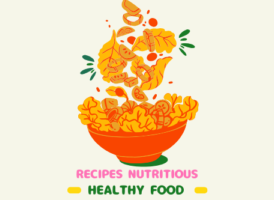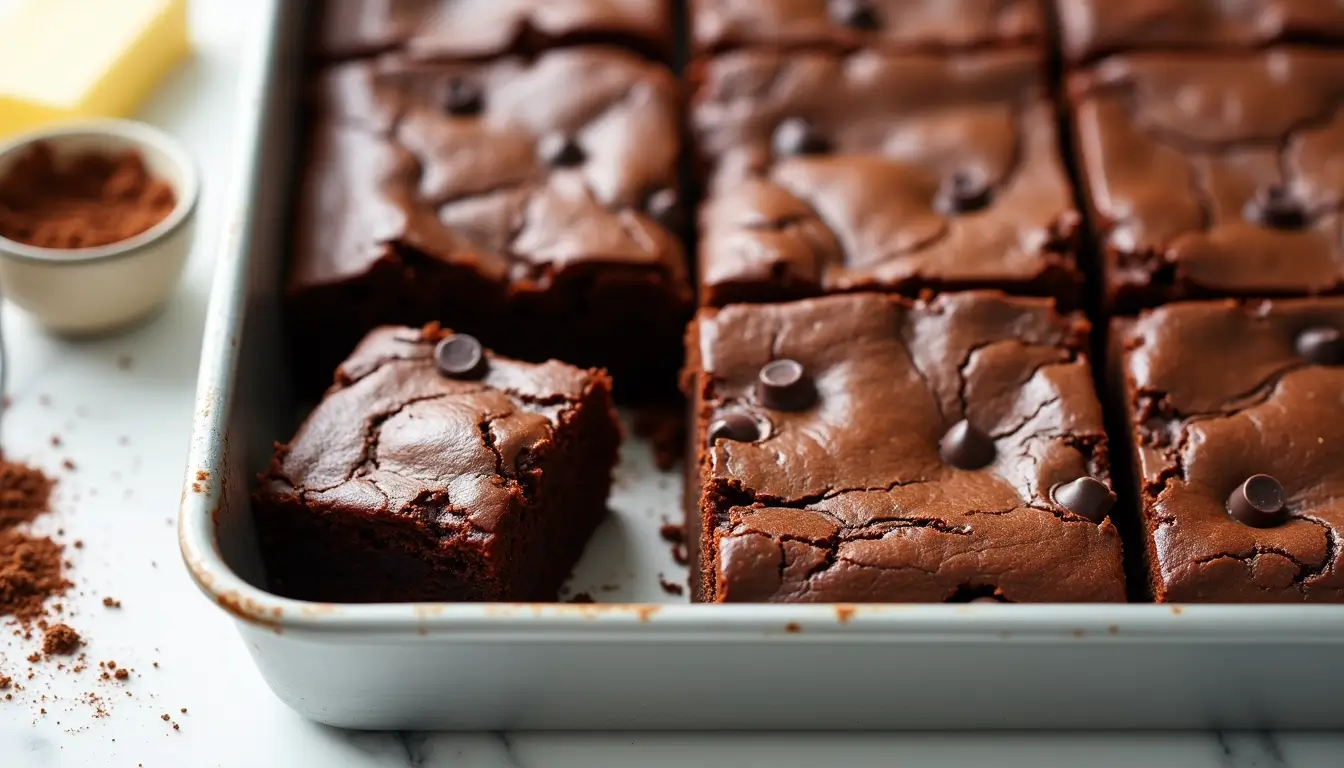The perfect brownie recipe needs just simple pantry staples – granulated sugar, all-purpose flour, and cocoa powder. No fancy ingredients or complicated techniques required.
This easy brownie recipe comes together in one bowl, perfect for both experienced bakers and beginners. The secret lies in combining butter and oil to create incredibly moist brownies. Quality cocoa powder like Ghirardelli or Droste gives them that rich chocolate flavor you crave.
These homemade brownies recipe pack 184 calories per serving and taste absolutely delicious. You can store them at room temperature for up to 3 days or freeze them for up to 3 months, which makes them great for planning ahead.
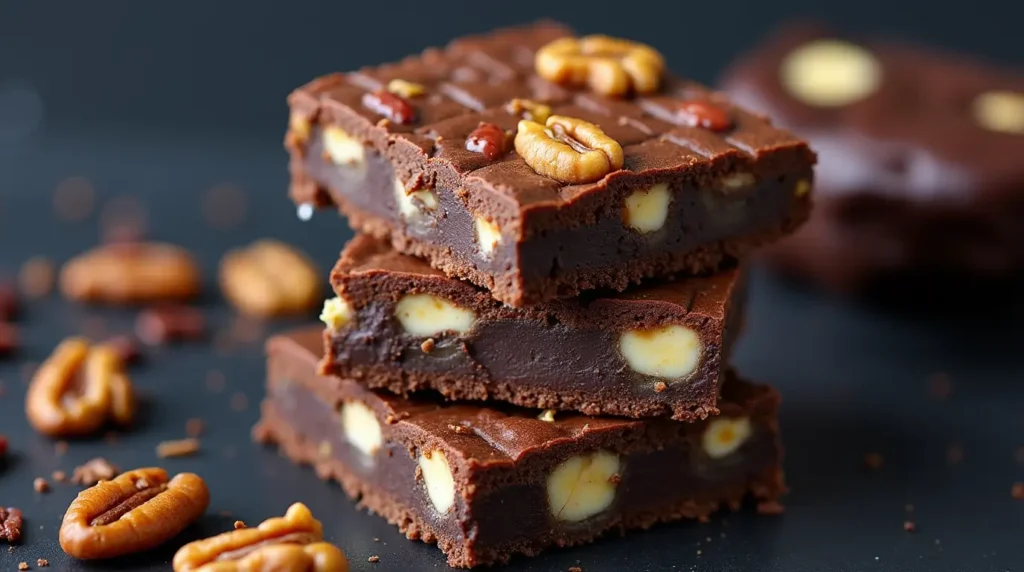
Countless readers have called these brownies “the best” – and we agree! Let’s take a closer look at this simple, foolproof recipe that will have you baking like a pro.
Table of Contents
Essential Ingredients for Quick Homemade Brownies Recipe
A perfect brownie recipe starts with choosing the right ingredients. We need granulated sugar, all-purpose flour, eggs, and vanilla extract to build the foundation.
Kitchen staples you’ll need
Your perfect batch of brownies recipe needs these key ingredients:
- 2 cups granulated sugar
- 1½ cups all-purpose flour
- 2-3 large eggs
- ½ cup oil or melted butter
- 2 tablespoons water
- ½ teaspoon vanilla extract
- ½ teaspoon salt
Each ingredient plays a vital role in the recipe. Eggs add moisture and bind the batter together to create that perfect chewy texture. Oil and butter work together to keep the brownies moist, so they stay tender even after refrigeration.
Choosing the right cocoa powder
Your brownie’s texture and taste depend heavily on the cocoa powder you choose. Cocoa powder contains 75-90% cocoa solids, which makes it more concentrated than regular chocolate. You can pick from two main types:
Natural cocoa powder keeps its original form after grinding and shows a light brown color with reddish hints. It retains its natural acidity and gives sharp, fruity notes.
Dutch-processed cocoa powder goes through alkalization to neutralize its acidity. This creates a smoother taste with deeper chocolate flavors. European brands like Droste and Valrhona typically use this process, while American brands such as Hershey’s and Ghirardelli don’t.
Quality brands make a big difference in your brownies recipe. Guittard Cocoa Rouge stands out with its complex, bitter notes that create silky, fudge-like textures. Keep in mind that Dutch-processed cocoa affects how your brownies rise because of its reaction with baking soda.
Preparing Your Kitchen Like a Pro
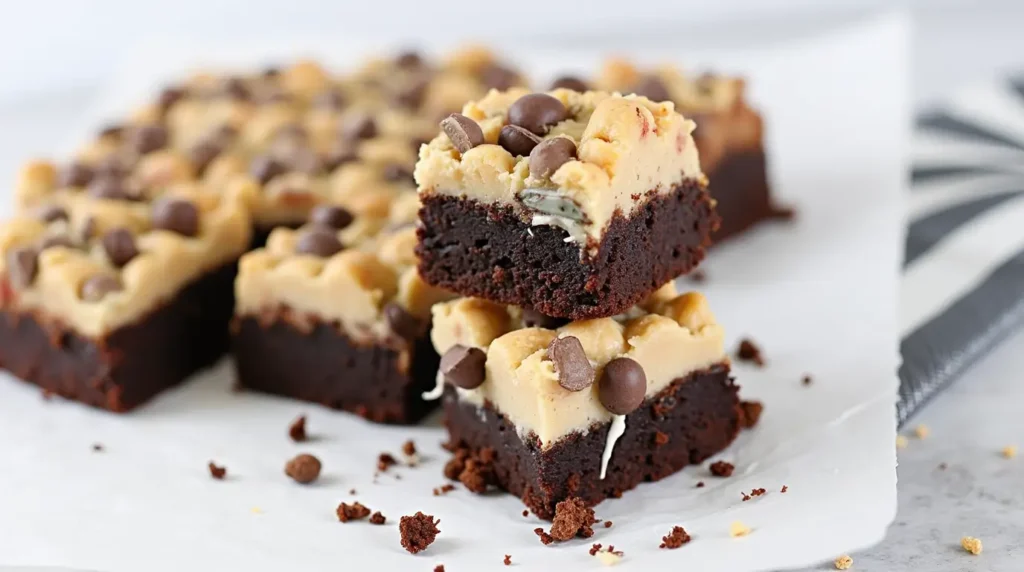
A well-organized kitchen makes baking perfect homemade brownies easier. We gathered all the right tools to help you prepare brownies smoothly from start to finish.
Tools and equipment setup
You’ll need these tools to make your brownies:
- A large mixing bowl to combine ingredients
- A whisk or wooden spoon to blend smoothly
- An 8×8-inch metal baking pan to get the best results
- Measuring cups and spoons to portion precisely
- Parchment paper to remove brownies easily
- A probe thermometer to check when they’re done
Metal bowls with non-slip bases work great. Bowls with pouring spouts make it easy to transfer your batter. You’ll find stainless steel or glass bowls last longer and clean up quickly.
Temperature considerations
The right temperature will give your brownies recipe the perfect texture. Your oven should be at 350°F to create that perfect balance of fudgy inside and crackly top. You can bake at 325°F for chewier brownies, but they’ll need more time in the oven.
Metal pans heat up better than glass ones. Dark metal pans soak up heat faster, which browns your brownies quicker. A glass pan needs the oven temperature lowered by 25 degrees to avoid overbaking.
Your brownies should reach an internal temperature of 180°F. Use your probe thermometer to check several spots in the middle. Keep the probe away from the pan bottom since it’s hotter than the brownies.
Pan preparation tricks
The right pan prep stops sticking and helps you remove brownies easily. First, coat the pan lightly with shortening or butter. Then line it with parchment paper. Cut your parchment paper to fit the pan’s width, leaving extra length hanging over two opposite sides.
These parchment paper edges work as handles to lift out your cooled brownies. This works better than just greasing the pan. You can also brush some butter or cooking spray on the parchment paper for extra protection against sticking.
Mixing the Perfect Brownie Batter

Making perfect brownie recipe batter needs exact timing and technique. We mixed the ingredients in a specific order that determines your homemade brownies’ final texture.
Proper ingredient order
You’ll get that coveted crinkly top when you combine eggs and sugar the right way. Start by whipping these ingredients together for 3-4 minutes until the mixture becomes thick and pale in color. The melted chocolate-butter mixture goes in next to create the foundation for fudgy brownies.
To get the best results:
- Melt butter and chocolate together over medium-low heat
- Beat eggs and sugar until pale and ribbony
- Combine chocolate mixture with the whipped eggs
- Fold in flour and cocoa powder
- Add mix-ins (if desired)
Mixing techniques for fudgy texture
The way you combine wet and dry ingredients makes all the difference. You should use a wooden spoon or silicone spatula instead of an electric mixer. Hand mixing keeps extra air out of the batter that could make your brownies too cake-like.
Your batter will get denser and harder to stir as you mix – this shows the gluten is developing properly. All the same, too much mixing forces excess air into the batter and can ruin that fudgy texture you want.
Signs of well-mixed batter
Your perfectly mixed brownie recipe batter will show clear signs. You’ll need a sturdy spatula to spread it in the baking pan – that’s how thick it should be. The surface should look glossy without any flour streaks showing.
The batter’s thickness tells you if everything’s right. A runny batter means you should double-check your liquid measurements. A mixture that’s too thick to spread usually means there’s too much flour in it.
That shiny top everyone loves comes from proper sugar dissolution. The sugar needs to completely dissolve in the egg whites. This creates a meringue-like top that turns into that classic crackly surface we all love.
Baking Time and Temperature Guide
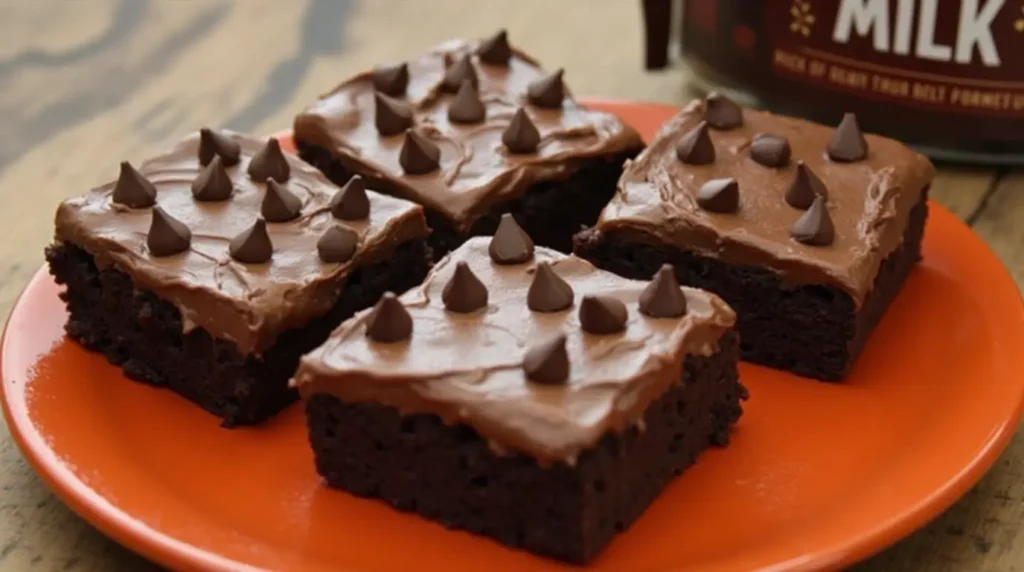
Becoming skilled at setting the perfect baking temperature is vital to create professional-quality brownies. Your oven’s behavior makes the most important difference in how your brownies recipe turn out.
Oven preparation steps
Heat your oven to 350°F (180°C) before you start baking. Use an oven thermometer to keep the temperature steady because most home ovens need fine-tuning.
The brownie pan belongs on the center rack. Turn the pan halfway through baking to get even heat distribution. Standard temperature works best with light-colored metal pans. Glass or dark-coated pans might need a temperature reduction of 25 degrees.
Visual doneness indicators
You can test brownie doneness in several ways. Here’s the quickest way to check if your brownies are ready:
- Start checking brownies 5 minutes before the recipe’s suggested time
- Insert toothpick halfway between edge and center
- Check multiple spots to avoid chocolate chip interference
- Look for moist crumbs, not wet batter
- Test internal temperature with probe thermometer
The internal temperature is a reliable way to check – you want 180°F (82°C) for perfectly baked brownies. Watch for visual signs too. The edges should pull away from the pan’s sides, and the surface should look shiny and set.
Perfect brownies recipe have clear signs. The top develops a thin, crisp layer with slight cracking. The center should feel set but still have some give when you shake it gently. Fudgy brownies need a toothpick with a few moist crumbs, while cakey ones should have a clean toothpick.
Note that brownies recipe keep baking after you take them out of the oven. Let them cool completely – about an hour – to get the best results. This cooling time helps develop the right texture and makes cutting easier.
Cool your brownies recipe completely to keep them fresh. Wait until they reach room temperature before adding frosting to prevent it from melting. The parchment paper helps you lift out the whole brownie recipe block easily for clean cutting once cooled.
Common Brownie Recipe Problems and Solutions
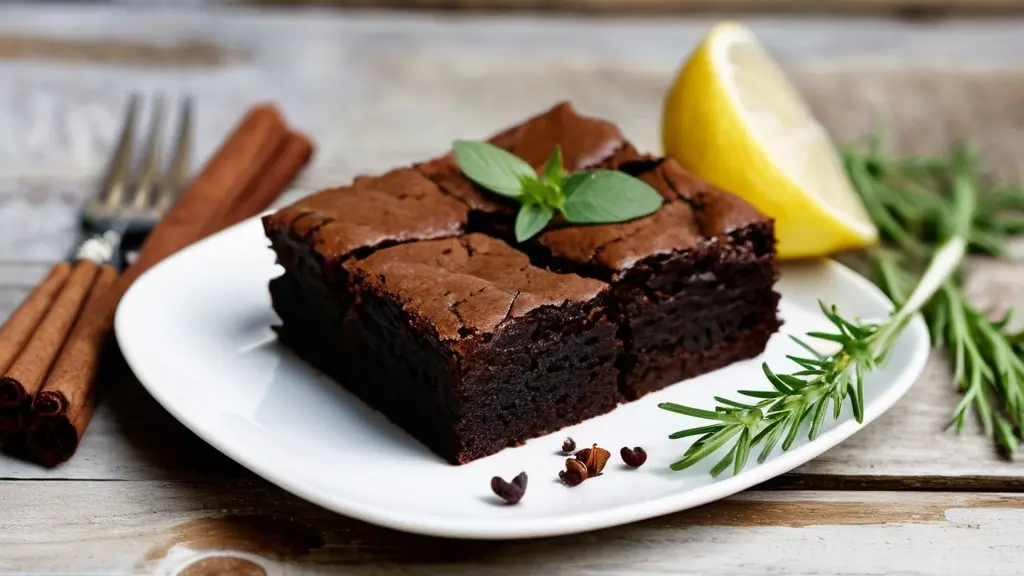
Even expert bakers run into brownie recipe problems now and then. A good grasp of common issues helps you avoid disappointing results with your homemade brownies recipe.
Fixing dry brownies
Two main things can make brownies dry: overcooking or too much flour. You should check your recipe’s flour-to-wet ingredient ratio carefully. The best brownie recipes use minimal flour compared to wet ingredients like butter and eggs.
Keep in mind that brownies continue to set after you take them out of the oven. Here are some ways to save dry brownies:
- Create a trifle by layering brownie pieces with whipped cream
- Process into crumbs for ice cream toppings
- Turn them into brownie butter for spreads
- Blend into milkshakes or smoothies
Dealing with uneven baking
Brownies need more attention than regular cakes to bake evenly. You’ll often see uneven baking show up as a gooey center with overcooked edges. Alton Brown’s double-bake technique can help prevent this:
- Bake at 300°F for 15 minutes
- Let cool for 15 minutes
- Put back in the oven until internal temperature hits 195°F (about 30 minutes)
This lets the dense center set without burning the edges. You can also rotate the pan 180 degrees halfway through baking time.
Preventing burnt edges
Wrong pan choice or temperature settings usually cause burnt edges. Light-colored metal pans work better than glass or dark-coated ones. Dark pans need a 25°F lower oven temperature.
Here’s how to protect those edges from burning:
- Put a foil shield around pan edges
- Bake longer at lower temperatures (325°F instead of 350°F)
- Use the middle rack for even heat distribution
Check the internal temperature in several spots – it should reach 180°F. If edges brown too fast, cover the pan with aluminum foil. Fan ovens might need a 20°C (about 40°F) temperature reduction to bake evenly.
Light-colored metal pans that match your recipe’s size specifications work best. Skip the heatproof glass dishes – they hold heat after coming out of the oven and can dry out the edges.

Conclusion
Anyone can make perfect brownies recipe like a pro with the right approach and attention to detail. The foundation starts with quality ingredients like Dutch-processed cocoa powder and the right tools.
Your brownies’ success depends on temperature control during mixing and baking. A probe thermometer helps you nail that sweet spot between fudgy centers and crispy tops. The right pan preparation and mixing techniques help you avoid common problems like dry edges and uneven baking.
Your baking skills will improve with each batch of brownies recipe. You’ll learn how your oven behaves and how ingredients work together. Even if things don’t turn out perfect, you have options – from creating brownie trifles to tweaking baking temperatures.
Great brownies recipe don’t need fancy ingredients or complex techniques. This piece should help you bake the perfect batch every time. To boost your baking skills with many more recipes and food ideas, check out our website recipesnutritious.com.
FAQs
Q1. What are the essential ingredients for making homemade brownies? The key ingredients for homemade brownies include granulated sugar, all-purpose flour, eggs, cocoa powder, oil or melted butter, vanilla extract, and salt. Using quality cocoa powder, such as Ghirardelli or Droste, can significantly enhance the chocolate flavor.
Q2. How can I achieve fudgy brownies instead of cakey ones? To achieve fudgy brownies, use a combination of butter and oil for moisture, and mix the batter by hand using a wooden spoon or silicone spatula. Avoid overmixing, as this can incorporate too much air and result in a cake-like texture. Also, be careful not to overbake the brownies.
Q3. What’s the ideal baking temperature and time for brownies? The ideal baking temperature for brownies is typically 350°F (180°C). Start checking for doneness about 5 minutes before the suggested baking time. The internal temperature should reach 180°F (82°C) for perfectly baked brownies. Look for moist crumbs on a toothpick inserted into the center, not wet batter.
Q4. How can I prevent my brownies from having burnt edges? To prevent burnt edges, use light-colored metal pans instead of glass or dark-coated ones. If using dark pans, reduce the oven temperature by 25°F. You can also create a foil shield around the pan edges, bake at a lower temperature for a longer time, or place the pan on the middle rack for even heat distribution.
Q5. How should I store homemade brownies to keep them fresh? Allow the brownies to cool completely before storing, which takes about an hour. Once cooled, they can be stored at room temperature for up to 3 days. For longer storage, you can freeze them for up to 3 months. Always ensure they are in an airtight container to maintain freshness.
